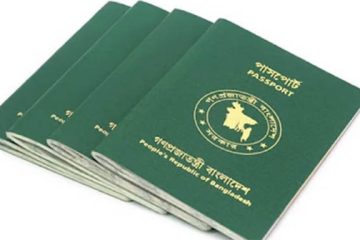Farmers these days need to use more fertiliser to produce crops as the land is losing fertilely because of deficiency in organic elements.
About 40 per cent of the country’s land area has become deficient in organic elements and other soil nutrients over a decade, according to experts at the Soil Research and Development Institute.
‘We need to use greater amount of fertilisers in land which is gradually losing its strength,’ Md Matiur Rahman, a farmer of Gerua at Savar in Dhaka, told New Age.
‘When I started to grow high-yielding BR-29 ten years ago, I needed to use almost half the quantity of fertilisers I use now,’ he said.
Matiur, 65, said he grows Shail rice, an indigenous variety, between the months of Asharh and Kartik and BR-29 between Paush and Baishakh.
Matiur took lease of eight bighas of land from a landlord this year and was cultivating only rice on it.
‘I need to use about 80 kilograms of urea, 20 kilograms of TSP and 40 kilograms of other fertilisers on a bigha to grow BR-29’, said Matiur, adding that Shail rice takes almost half the quantity of fertilisers than what is required to grow BR-29.
‘I can tell you from my experience that the soil has almost run out of its life,’ he said.
It is true that the production of rice per bigha (1 bigha equals 0.1338 hectare) has increased in 10 years, but the cost of production has also increased, he said.
SRDI records show that more than 1,200,000 hectares of land have become deficient in organic matter since 1998.
In the 1970s, less than 25 per cent of the country’s land mass was deficient in organic matter, said Md Moqbul Hossain, a senior scientific officer at the SRDI.
He said land areas deficient in organic elements as well as other essential soil nutrients that include phosphorus, potassium, sulphur, zinc and boron had alarmingly been increasing over decades.
Statistics indicate that areas deficient in zinc and boron have increased by 40 and 18 per cent respectively compared with the ratio in 1998.
Moreover, areas deficient in sulphur, potassium, and phosphorus have increased by 50, 45 and 17 per cent respectively compared with the ratio in 1998.
According to the records of the Department of Agricultural Extension, use of chemical fertilisers has almost doubled in a decade.
The department’s deputy director Fazl-e-Elahi told New Age about 45 lakh tonnes of chemical fertilisers that include 29 lakh tonnes of urea, 5 lakh tonnes of triple super phosphate and 4 lakh tonnes of di-ammonium phosphate were estimated to be used in the country in 2010-2011.
He said farmers had a tendency to use an excessive amount of urea than the actual need as it helps to increase vegetation.
Dhaka University soil science department professor Shahid Akhter Hossain told New Age intensive and unplanned cropping was the main reason behind the loss of soil nutrients in Bangladesh.
Nowadays, Shahid Akhter said, the mainstay of Bangladesh’s rice cultivation is high yielding rice varieties which intake more nutrients from the soil than the indigenous varieties do.
Moreover, mono-cropping of rice has gradually replaced traditional practice of rice cropping in rotation with leguminous crops, he said.
Cultivation of leguminous crops in the gaps between rice harvests minimised the intake of nitrogen by rice plants, he said.
Nitrogen rests in soil in both organic and inorganic forms. Over 90 per cent of the soil nitrogen is associated with soil organic matter, he said.
Shahid Akhter also pointed out the factor that cropping intensity of modern rice varieties had also led to an increased use of urea (non-organic nitrogen fertiliser) and other chemical fertilisers that include TSP, murate of potash, zinc and DAP.
He said the government needed to encourage the farmers to use more organic fertilisers than chemical fertilisers and work out a soil-friendly cropping pattern instead of promoting monoculture.




















